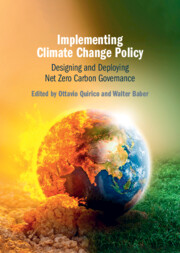The European Union (EU) has set increasingly more ambitious climate targets since the adoption of its landmark emission trading system in 2003, particularly via the approval of the Green Deal in 2019 as a roadmap towards net zero carbon governance by 2050. Countries such as the United States, Japan and the People’s Republic of China have also established the objective of climate neutrality by 2050 and 2060 through recent regulatory initiatives. But the question remains, are current climate policies viable means to achieve a maximum two degrees Celsius of warming, and possibly one and a half degrees, as outlined in the Paris Agreement? This volume develops an interdisciplinary and comparative analysis to assess the level of convergence between worldwide climate policies and explore ways to improve key regulatory mechanisms and increase the effectiveness and consistency of greenhouse gas mitigation and adaptation measures. Given that 28 conferences of the parties to the United Nations Framework Convention on Climate Change have not proven sufficient to put the world on track to achieve climate neutrality, besides continuing to seek convergence in policy-making at the level of primary rules, the international community should consider improving the effectiveness of enforcement mechanisms from the standpoint of secondary norms through an integrated approach.
This volume is part of the Jean Monnet project Implementing Climate Policies led by the ANU Centre for European Studies at the Australian National University (620604-EPP-1-2020-1-AU-EPPJMO-PROJECT), which is supported by the European Commission under the Erasmus+ actions. The project explores how the climate policy of the EU and other countries can be effectively implemented in the international arena.
